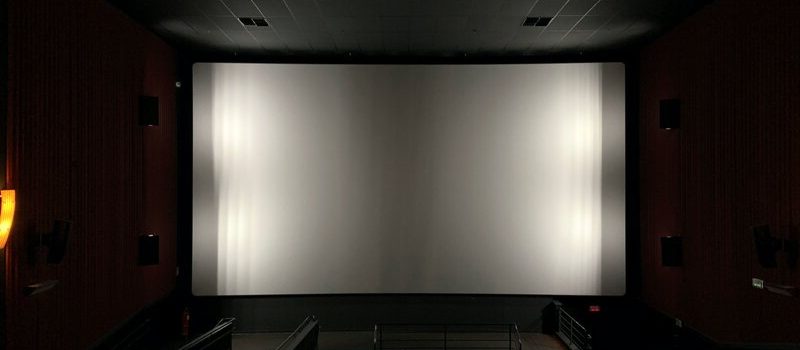The projector is always attached to the image of the projection screen – the plane has a special coating that improves the reflective properties of the screen.
However, projection screens are fixed in size and do not, in all cases, offer maximum portability. So, can you use a projector on a white wall?
If you are concerned about this issue and want to find the most useful guides to help you use the projector anywhere without a screen, this article is for you.
Scroll gently so as not to miss important information!
Table of Contents
Can You Use A Projector On A White Wall?
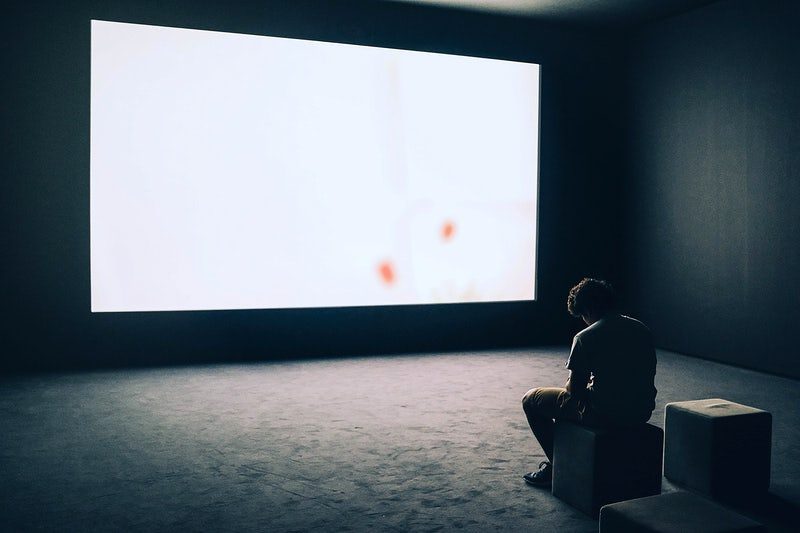
Projector On A White Wall
You can absolutely use the projector on a white wall. However, when replacing the projection screen with this plane, you must accept that the viewable picture quality is affected.
There are two main reasons why this plane is not the perfect choice for presenting images.
The first is the reflectivity of the wall. White is more reflective than any other color. However, the shortcoming of the wall, whatever the color, compared to the projection screen is the special coating.
The presence of a layer on the projection screen has improved reflectivity, resulting in brighter and more detailed images.
Besides, not every wall is completely white. In this case, to achieve the desired image quality, you must repaint.
The second reason the image quality is shown on the wall may not be too high is that the wall surface is not completely flat.
Most of the walls are not as smooth as what you see. Cracks and rough spots, although small, can make the projected image less sharp and not bright enough.
Especially if you own a high-resolution projector model, these surface defects will be almost fully exposed when the projection plane is the wall.
What Is The Best Wall Color For Projector?
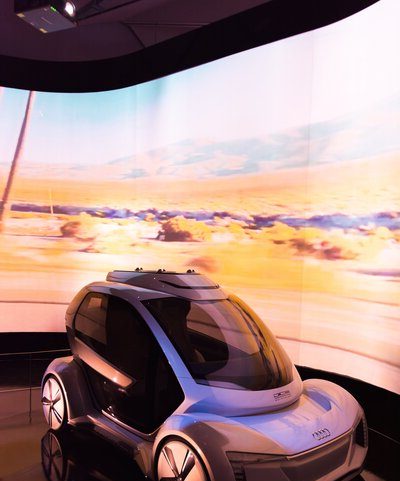
The best wall color
You could use the projector in any color. However, you should also note that the color of the projection plane will greatly affect the output image quality.
The color of the projection plane affects the combination and produces new colors and light contrasts.
In terms of color combinations, for example, if the plane you selected is red, the whites on the projected image will also have a reddish tint. Therefore, to minimize color doping, white is always the safest choice.
In terms of contrast, if the projection screen were a light-absorbing color, you should have less difference. Therefore, if you desire the highest contrast projection image, your projection plane will need a darker color.
White and gray reflect light the most. Colors like dark blue and dark gray are ideal for absorbing ambient light, giving you a better viewing experience on the big screen in brightly lit rooms.
However, selecting a special wall color as above may affect the image quality when the resulting colors are not as fidelity and bright.
In short, neutrals like gray would be the ideal choice for projector use without a screen. This color possesses both black and white advantages while providing both contrast and light absorption that you are always looking for.
How To Paint On A Wall?
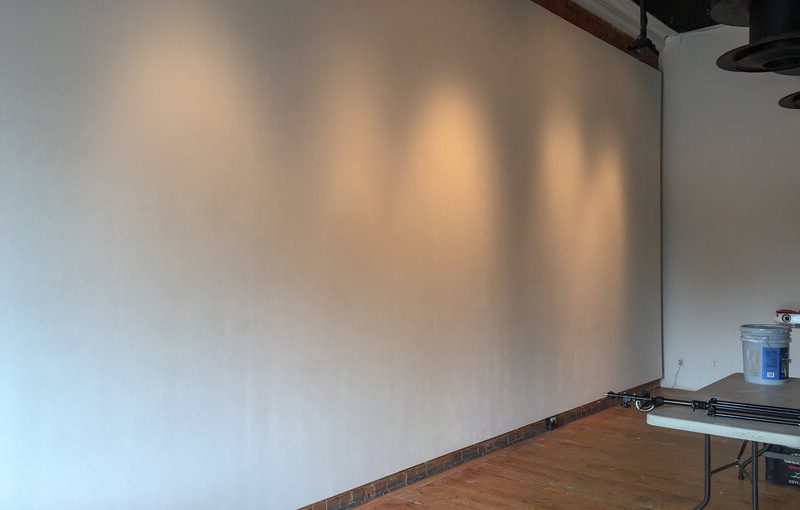
How To Paint On A Wall?
As mentioned in the previous section, if you want to be able to point the projector at the wall and capture the highest quality image possible with DLP or LCD technology, you need to repaint your flat panel.
To renovate the projection plane, you will need to prepare the right paint and supporting tools such as paint rollers and appropriate ladders.
After you have prepared all the necessary tools, the next steps will be quite simple when you need to cover your wall with layers of paint. However, following traditional operations is not enough to achieve the highest efficiency.
So, how to use a projector on a wall? Does projector paint work? Here are some tips you should follow to paint a projector wall for the best final results.
- First, you need to prepare a clean base layer. In this preparatory step, you will need to remove all kinds of dirt and impurities on the surface.
You can also use a wet cloth to wipe if the surface is with dust. If you want to refinish a previously painted surface, you’ll have to scrape off the old paint, including any remaining firmly attached.
- After the preliminary treatment to create the perfect base, you also need to check the wall thoroughly.
- As mentioned, sometimes, a small crack or bump can impact the output image quality. Therefore, make sure you sand all rough areas.
- If the surface has cracks, you need to take timely repair measures before starting to paint.
- Another little trick you can apply when painting on convex and angular surfaces is to use the right tools. Instead of rollers, some tools you can use include spray guns and brushes.
- In addition to surface treatment issues, you also need to consider the size of the wall you want to improve into a projection plane.
To have a projection plane of a size that meets expectations, you can mount the projector in the end position, then determine the screen size based on calculating ⅔ of the viewing distance of the projector.
FAQs
You can completely project images on a white wall, as long as you have understood the above principles as well as carefully studied some of the common problems below.
Is a projector better on the white or black wall?
Black is a color that does not reflect light to the eye significantly, thus resulting in a sharper image. Especially in areas with a lot of light, black walls will be the ideal projection choice over white walls.
Can I use a white sheet for a projector?
Yes, even a white sheet gives a better effect than a wall of the same color. The reason lies in the fabric; the towel has a high smoothness and is easy to use.
You need to hang the pieces properly to prevent wrinkles and movement, and you’ve got an ideal projection plane.
Do projectors work on black screens?
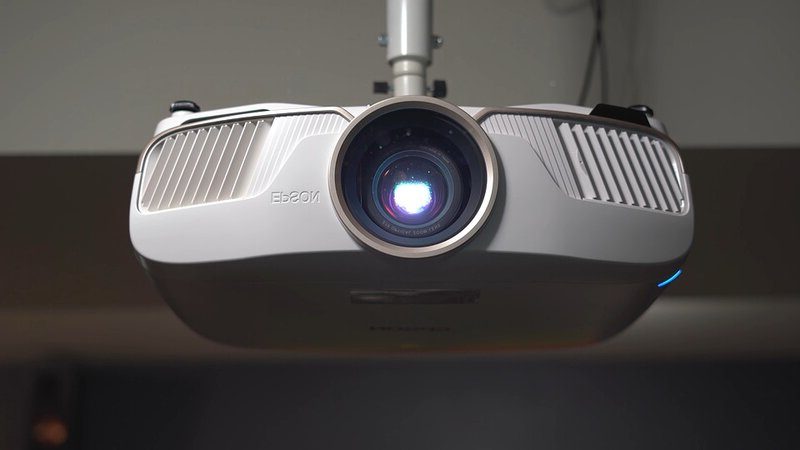
Is it work on black screens?
The projector still works fine on the black screen. However, ambient light can greatly influence the effect, so you need to increase the reflectivity to get the best image quality.
Can we use the phone as a projector?
The answer is yes. All the tools you need to prepare are a phone, a lens (a magnifying glass or convex glass), and a phone holder.
Conclusion
Can you use a projector on a wall? The answer is yes, even painting the walls is one of the simplest ways for you to set up your home cinema.
Although there is much controversy about the disadvantages of not using a projection screen, hopefully, the information Display Central provides above is enough for you to set up your projection plane with some basic tools.
Thank you for reading!

Michael Brown has been a lead editor of the website display-central.com for a long time. He’s been a technology examiner for almost a decade, specializing in the best display solutions such as laptops, projectors, and TVs, Mobile. Michael will provide you with helpful and relevant knowledge and advice based on his technical background.
